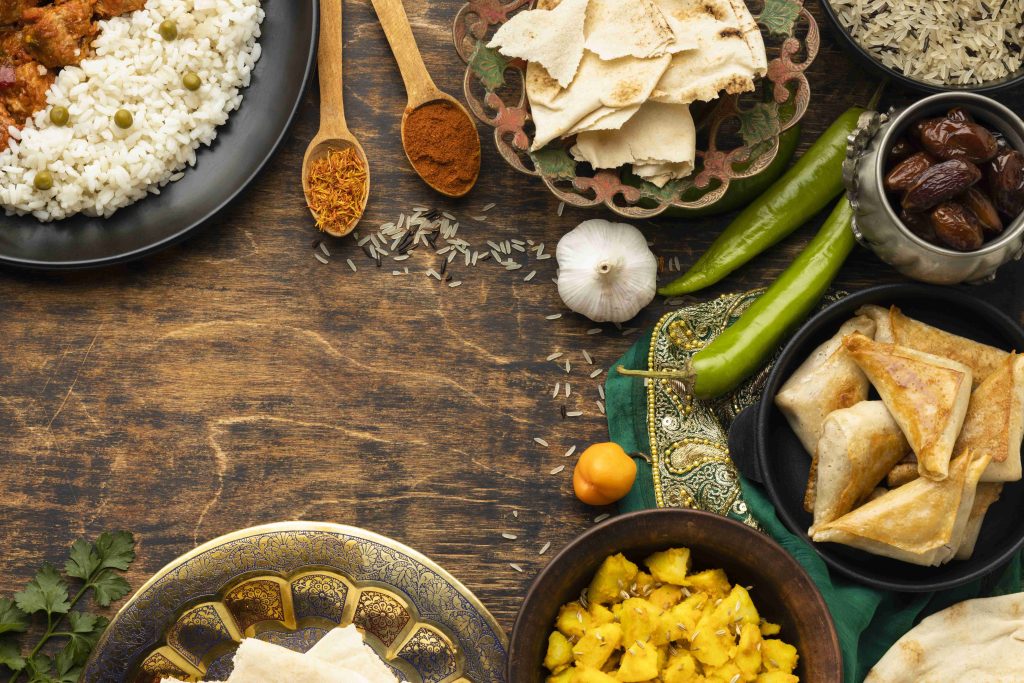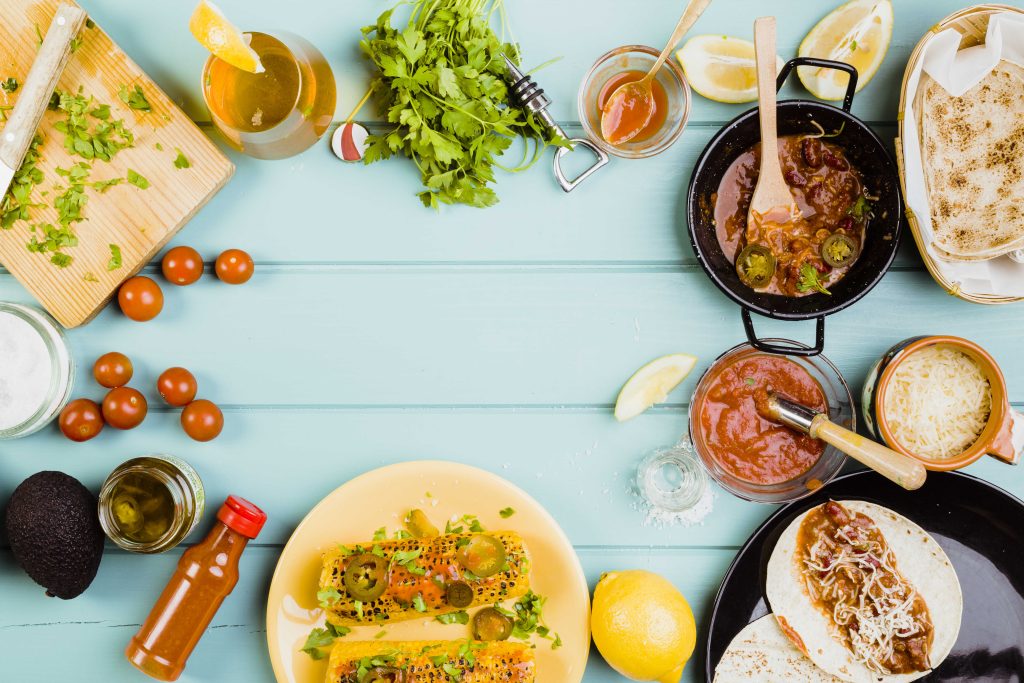
Korean food has been globally known due to massive Korean Drama viewed around the world. It’s no problem if you don’t have TV at home. There’s a paid app like Viu that provides K Drama that you can see back to back, as long as you subscribe.
During the 90s, Indonesia was exposed to telenovelas (Argentine soap operas). We are familiar with Marimar, Betty La Fea and others. Similar things happened with Chinese and Japanese movies, which lead to people eager to visit the countries to see all the things they see from movies.
One of the biggest curiosity from viewers is the food. This opens an entrepreneurial opportunity for culinary business. Some even bring the scent of the food’s authenticity by creating scenes from its original country.
Food is a fascinating lens through which we can explore culture, identity and history. Gastronomy adventure has been a unique opportunity to immerse oneself in a new culture. Entrepreneurs also gained success by opening culinary businesses. Some of them even create scenes that resemble its origin.
Let’s talk about food, authentic food. Signature food that links you to its origin. When you hear the word gudeg, you instantly remember Yogyakarta. We are probably keen on kimbap after seeing it in K-Pop drama. Have you ever bought pizza or gelato after watching them on TV?
Every region offers a distinct culinary identity, marked by local produce, regional spices, and traditional cooking methods. However, there are certain menu that’s been adjusted to local wisdom. Example, beef is commonly used in Indonesia though some Asian’s cooking prefer pork. No alcohol in mojito is another example of adjustment.
The word “culinary” is defined as something related to, or connected with, cooking. Cooking transforms food from nature to culture. Food sustains life. At the same time, it symbolises social life and cultural identity for various groups of people throughout the world. Indeed, every nation has its own culinary style which has been gradually accepted and becomes a taken-for-granted culinary ideology. Culinary is also an indicator of how these develop and alter over time and space. Culinary is both a relevant source of signification and an effective form of communication of distinctive culture, with strong national character and diversity of features. Understanding the differences and its profound cultural connotation, explore their cultural heritage, and promote further exchanges of culture.
Food is not just sustenance; it is a reflection of culture, history, and tradition. Traditional dishes from around the world have fascinating origins that tell stories of migration, conquest, and innovation.
Let’s start our culinary journey in Italy, where pasta reigns supreme. The origins of pasta can be traced back to ancient times, with evidence of its existence in the Mediterranean region as early as the 1st century AD. However, it was the Arab conquest of Sicily in the 9th century that introduced dried pasta to Italy. The Arabs brought with them the technique of drying pasta, allowing it to be stored for long periods, making it an ideal food for sailors and travellers. Over time, pasta became an integral part of Italian cuisine, with each region developing its own unique shapes and sauces.
Moving on to Asia, we encounter the rich and diverse world of Indian cuisine. One dish that stands out is biryani, a fragrant rice dish layered with meat, vegetables, and aromatic spices. Biryani has its roots in Persia, where it was known as “birinj beryān” or “fried rice.” It was brought to the Indian subcontinent by the Mughals, who ruled over a vast empire that encompassed present-day India, Pakistan, and Bangladesh. The Mughals added their own touch to the dish, incorporating local ingredients and flavors, resulting in the biryani we know and love today.

Travelling across the Atlantic, we arrive in Mexico, home to one of the world’s most iconic dishes: tacos. Tacos have a long history, dating back to the indigenous civilizations of Mesoamerica. The Aztecs, Mayans, and other indigenous groups used corn as a staple food, and they would wrap it in tortillas made from maize dough. The Spanish conquistadors, upon their arrival in the 16th century, encountered this culinary tradition and introduced new ingredients such as beef, pork, and chicken. The fusion of indigenous and Spanish flavors gave birth to the modern taco, which has since become a global sensation.
Heading east to Japan, we discover the art of sushi. Sushi, in its simplest form, is a combination of vinegared rice and raw fish. Its origins can be traced back to Southeast Asia, where people would ferment fish with rice to preserve it. This preservation technique eventually made its way to Japan, where it evolved into the sushi we know today. In the 19th century, sushi underwent a transformation with the introduction of nigiri sushi, where a small mound of rice is topped with a slice of raw fish. This innovation revolutionized sushi and propelled it to international fame.
Our final stop takes us to the heart of Africa, where we encounter the vibrant flavors of Moroccan cuisine. One dish that encapsulates the essence of Moroccan cooking is tagine. Tagine refers to both the cooking vessel and the slow-cooked stew that is prepared in it. The tagine pot, with its distinctive cone-shaped lid, allows for slow and even cooking, resulting in tender and flavorful dishes. Tagine has its roots in Berber cuisine, the indigenous people of North Africa, and has been influenced by Arab, Jewish, and French culinary traditions. The combination of aromatic spices, tender meat, and sweet dried fruits creates a symphony of flavors that is uniquely Moroccan.
As we explore the fascinating origins of traditional dishes, we gain a deeper appreciation for the cultural significance of food. These stories remind us that behind every plate of food lies a tale of history, migration, and innovation. So, the next time you savor a traditional dish, take a moment to savor the stories it carries with it.
One of the most fascinating aspects of authentic cuisine is how it evolves over time. As cultures interact and exchange ideas, their culinary traditions blend and transform, creating unique and delicious dishes. Take, for example, the fusion of Indian and British cuisine in the form of chicken tikka masala. This iconic dish, which originated in the United Kingdom, combines the flavors of Indian spices with a creamy tomato sauce, resulting in a mouthwatering blend of cultures.
Authentic cuisine also reflects the geography and climate of a region. In coastal areas, seafood often takes center stage, with dishes like ceviche in Peru or paella in Spain showcasing the bounty of the sea. Inland regions, on the other hand, may rely more on grains, vegetables, and meats. The use of local ingredients not only adds flavor but also connects people to their environment, fostering a sense of place and belonging.
Moreover, authentic cuisine is deeply intertwined with religious and social customs. In many cultures, certain foods are associated with specific religious holidays or rituals. For example, during the Jewish holiday of Passover, matzo, a type of unleavened bread, is eaten to commemorate the Israelites’ exodus from Egypt. Similarly, in Mexico, tamales are traditionally prepared for Christmas, symbolizing unity and celebration.
Authentic cuisine also serves as a means of preserving cultural heritage. Traditional recipes are passed down from generation to generation, ensuring that the flavors and techniques of the past are not lost. In this way, food becomes a tangible link to our ancestors and a way to honor their memory. For instance, in Italy, the art of making pasta by hand has been perfected over centuries, with each region having its own unique shapes and sauces.
Furthermore, authentic cuisine can be a powerful tool for cultural diplomacy. Sharing a meal with someone from a different culture can foster understanding and bridge divides. Food has the ability to transcend language barriers and bring people together in a way that few other things can. Through the exchange of recipes and culinary traditions, we can build connections and promote peace and harmony.
In conclusion, exploring the cultural significance of authentic cuisine allows us to appreciate the stories behind the food we eat. From the fusion of flavors to the use of local ingredients, from religious customs to the preservation of cultural heritage, authentic cuisine is a window into the soul of a people. By embracing and celebrating the diversity of global cuisine, we can foster a greater understanding and appreciation for the world we live in. So, let us embark on a culinary journey, one plate at a time, and savor the rich tapestry of flavors and stories that await us.
References :
Exploring Global Cuisines: A Journey of Flavors and Traditions — Authentic Kitchens
What Is The Relationship Between Food And Culture – Relationship Between
Global Kitchen Tales: Stories Behind Authentic Cuisine – Moments Log


